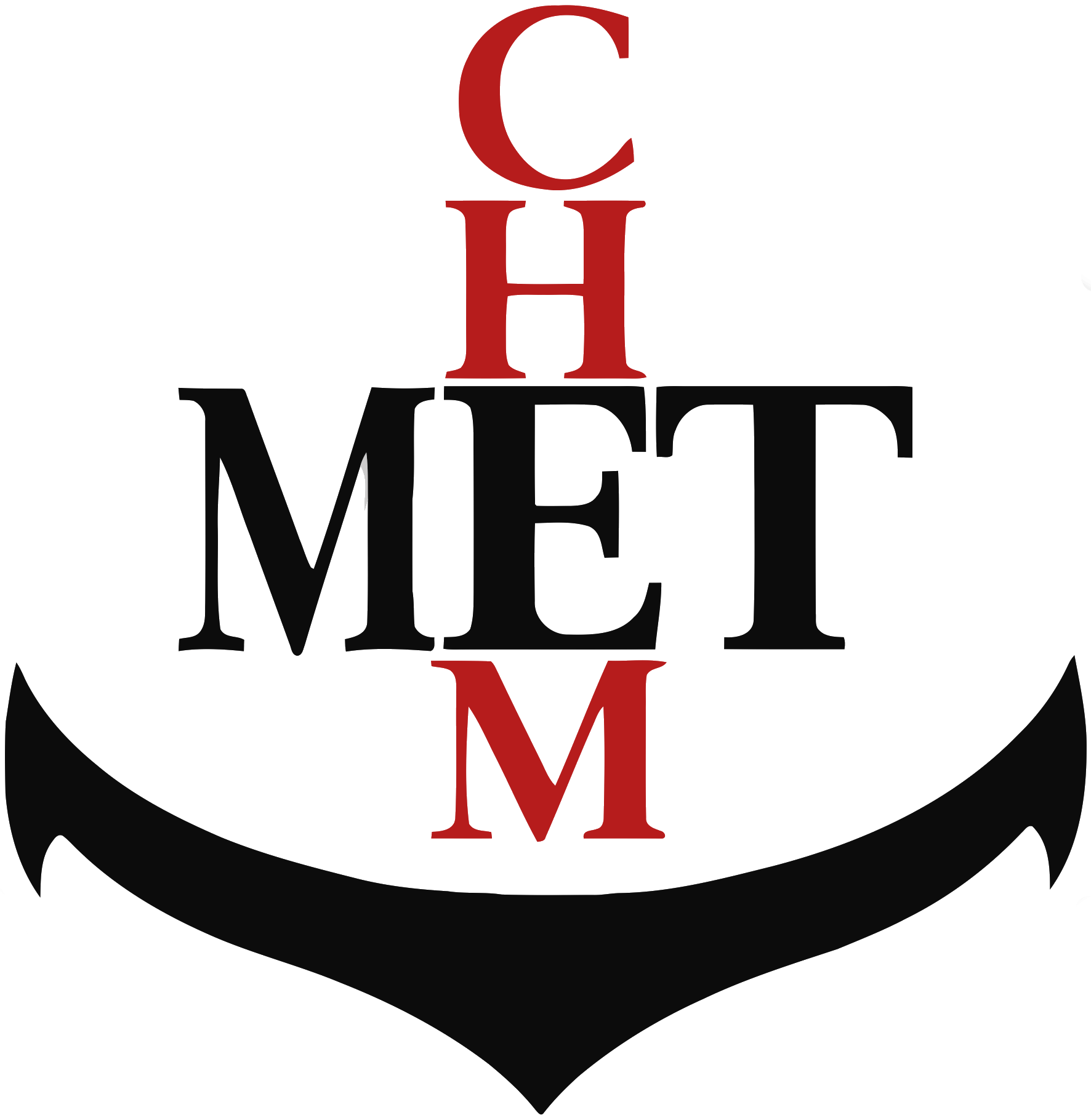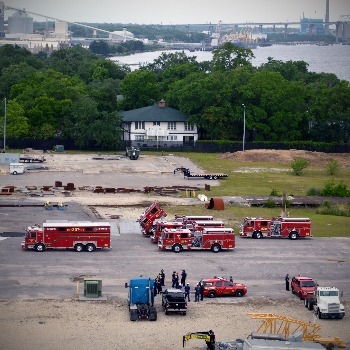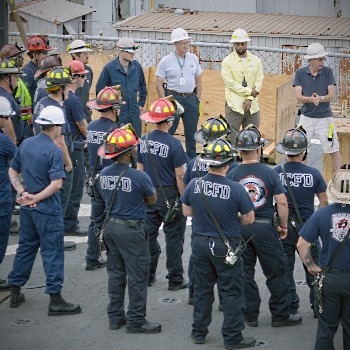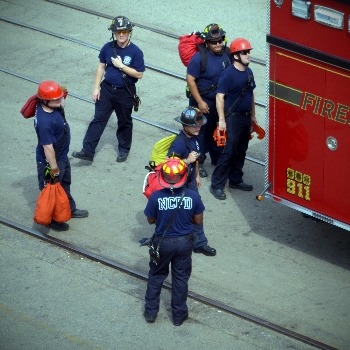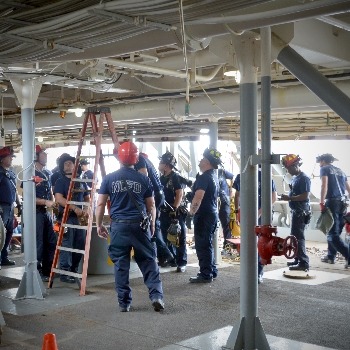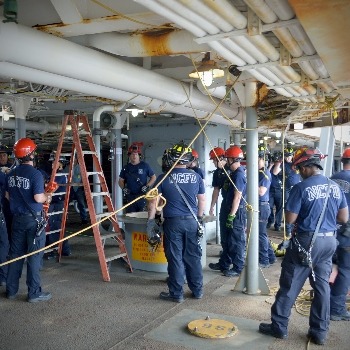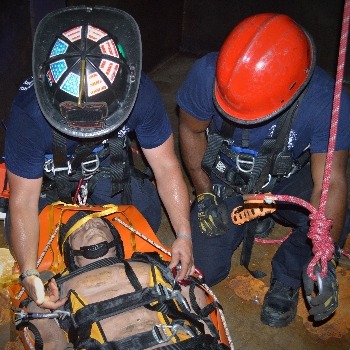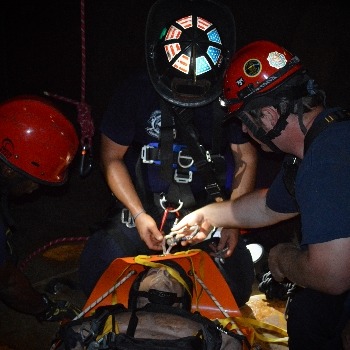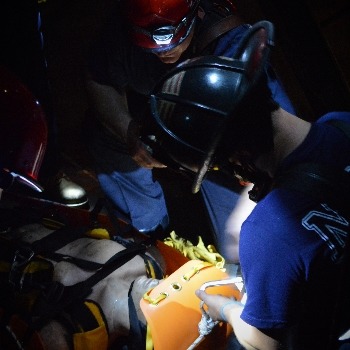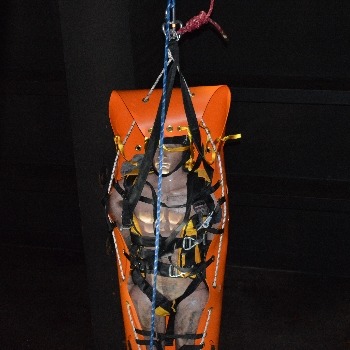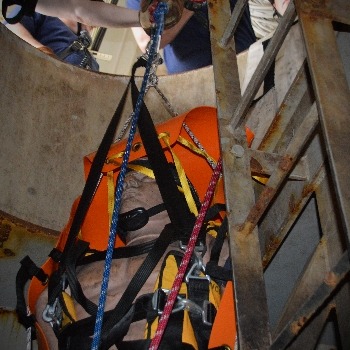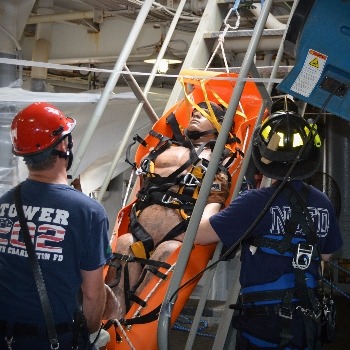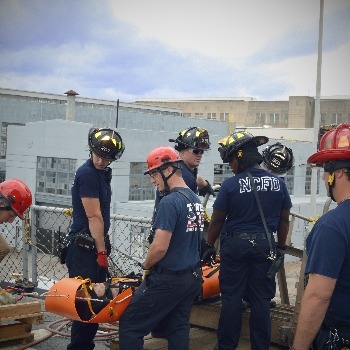Images by David Miller
Over the last several months, we have worked with local fire department and shipyard personnel to discuss ways in which all involved parties can collaborate in emergency situations involving shipboard confined spaces. With the intent of becoming acquainted with all available resources and strategizing how best to utilize these, we developed a basic technical rescue training itinerary and had this approved by the U.S. Navy’s Military Sealift Command (MSC) program to perform aboard one of the organization’s Henry J. Kaiser-class fleet replenishment oilers.
Our many concerted efforts to achieve these goals came to fruition in September of 2015. Crew members of the ship utilized for training joined our Marine Chemists and personnel from the North Charleston Fire Department (NCFD) and Detyens Shipyards, Inc. (DSI) to implement the first local, large-scale confined space training exercise of its kind.
Prior to commencing the drill, one of our chemists and DSI personnel lowered a manikin into one of the vessel’s cargo tanks to stage our victim. The chemist performed atmospheric testing and certified the tank safe for entry. The corresponding Marine Chemist Certificate was posted at all appropriate locations and a brief safety and scenario briefing were held. A simulated emergency call was then placed, prompting crews of rescue personnel to arrive at intervals standard to their normal locations in regard to the shipyard. These crews staged rigging equipment, entered the tank, and placed and secured the manikin in a rescue stretcher. The manikin was then extracted from the tank and carried off of the vessel. A short debriefing followed.
Over the weekend we replicated this exercise aboard another vessel of the same class. In conjunction with members and affiliates of the U.S. Coast Guard, NCFD, DSI, and the vessel’s crew, we completed rescue operations more smoothly and efficiently than before. Countless factors, tasks, and collaborative efforts are involved with emergency response operations. We recognize that practice is key to ensuring we have the best chance possible to successfully carry out any rescue scenario, and we are excited to participate in more planning and practice in these efforts.
This project was absolutely crucial and has brought about a better understanding of shipboard confined space rescues and how these should be approached and coordinated in our area. Through it we now better recognize how authorities and the maritime workforce can work together to best utilize all parties’ expertise and experience during future incidents.
